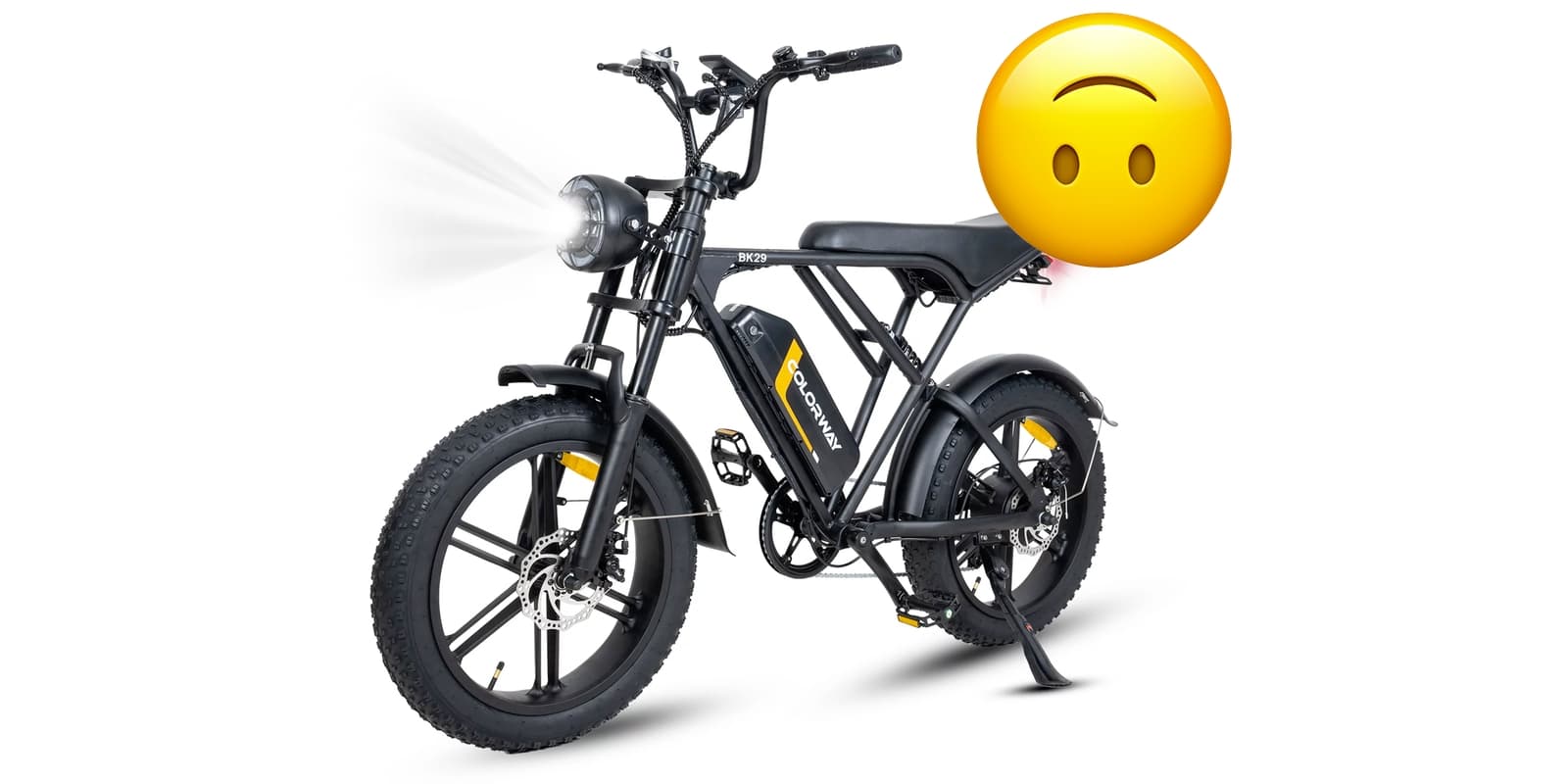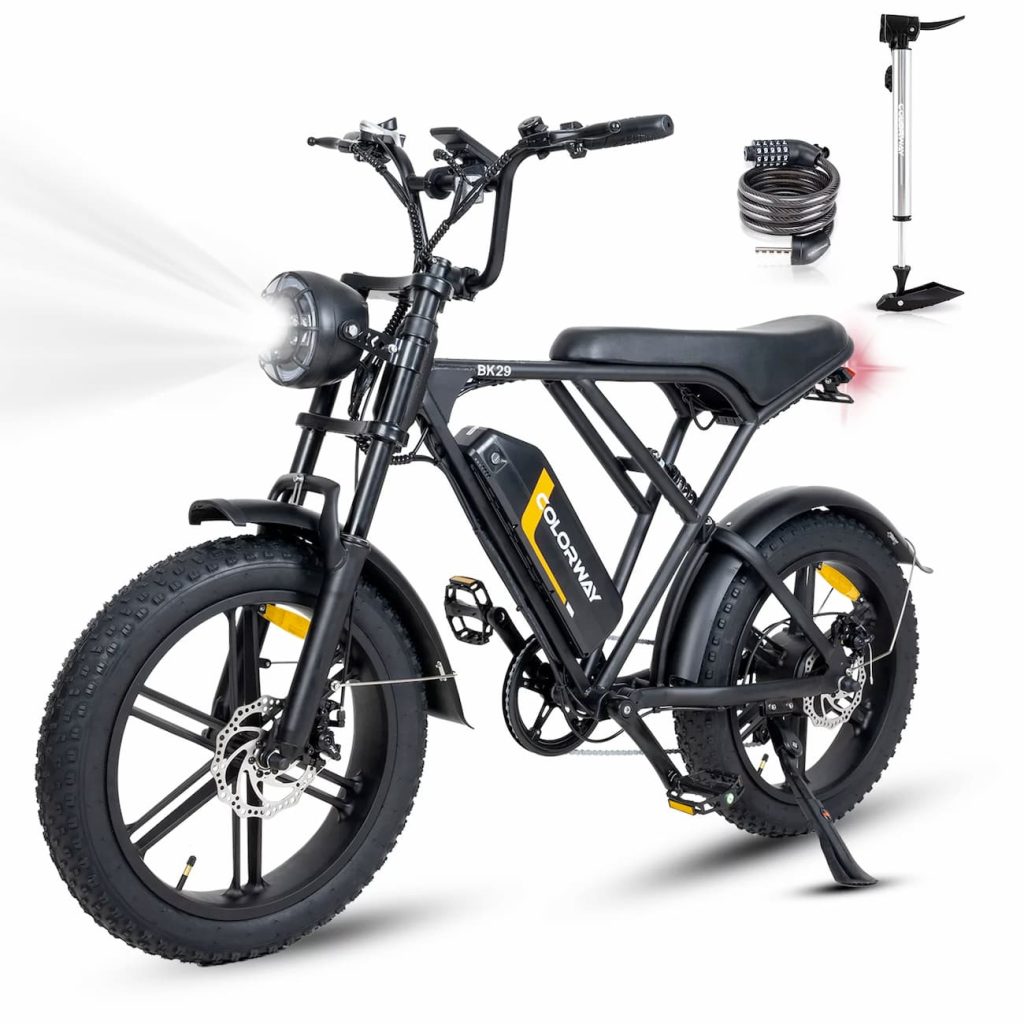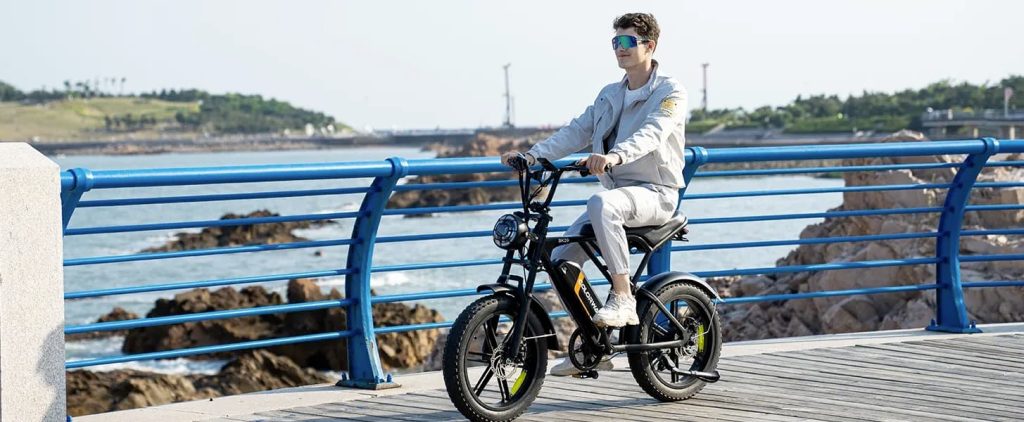
Here’s something I didn’t expect to see today. Walmart has an interesting electric moped on sale for an attractive $779. The only problem is that it comes with the handlebars apparently installed backwards.
The Colorway e-bike is a mystery wrapped in a riddle. It comes with either a 750W or 250W rear hub motor, depending which line of the spec sheet you read. The bike claims a 20 mph (32 km/h) top speed, though it’s a bit worrying that Walmart admits right there on the spec sheet that it can only hit 20 mph when the battery is fully charged.
Then it’s got a 48V 15Ah battery for 720 Wh of capacity. That’s actually fairly impressive, and is slightly larger than the industry average, believe it or not. And if you’re in the mood for believing, Walmart says it will go as far as 20-40 miles (32-64 km) on a single charge of that battery.
The electric moped rides on 20″x4″ tires, features a 7-speed Shimano shifter and even includes full-suspension, though neither the front fork or rear shock look like high end suspension.
For now we’ll ignore the odd choice of name “Colorway”, which is a bit like naming a new car “Paint job”.
But the real kicker on this $1,299 e-bike that is currently marked down to $779 is that the handlebars are installed backwards.

Yes, that’s right. Check out the stem (the part that clamps the handlebars to the bike). It’s reversed, pointing back towards the saddle instead of forwards like normal.
To be fair, there’s an argument to be made that it isn’t “wrong”, per se. A reversed stem is a possible way to set up a bike, it’s just almost never done outside of a few niche cases. For extra small riders that aren’t large enough to handle a bigger bike, it puts the bars close enough to reach with their short arms. Some people also reverse the stem when using the bike for stunts.
The configuration is exceedingly rare though and in this case is almost certainly a mistake.
The setup is sometimes referred to as “tiller steering”, since instead of the stem letting the handlebars lead the bike, it is reversed like a boat tiller. That means the rider is sort of pulling the bars from side to side in the same motion as controlling the tiller on a boat.
The biggest downsides of the setup are that it creates a cramped cockpit and can lead to jerkier steering, especially for someone who isn’t used to the setup.
In this case, it’s possible that the bike was intended to be used this way. But based on the ultra budget cost and the fact that it’s being sold at Walmart, I’d wager that it’s equally possible that someone simply installed the handlebars wrong before the bike was sent for its product photoshoot. Lending credence to that theory is the fact that some of the riding shots show the handlebars installed correctly, like in the image below.

For those that would like to reinstall the handlebars the correct (or at least traditional) way, it’s possible but not exactly simple.
There’s more to it than just loosening the stem bolts and spinning the handlebar back around. You’ll also need to remove the brake levers, shifter, display and any other accessories on the handlebars like the bells and reflector. Then they’ll need to be reinstalled correctly. It’s not something that anyone armed with a 5mm hex wrench and a Phillips head screwdriver can’t handle, but it’s not a two minute job, either.
Of course the bike would probably work fine the way it is, as long as you could get used to the somewhat odd prospect of having your handlebars on backwards. But hey, you do you, Walmart!
Read more: These are the best electric bikes for every budget
